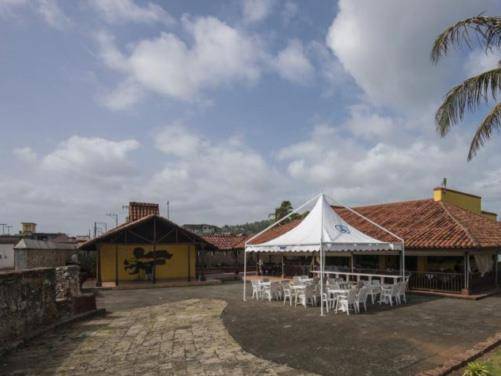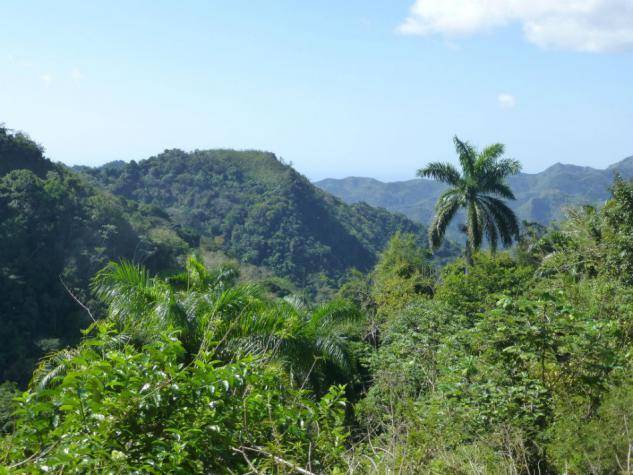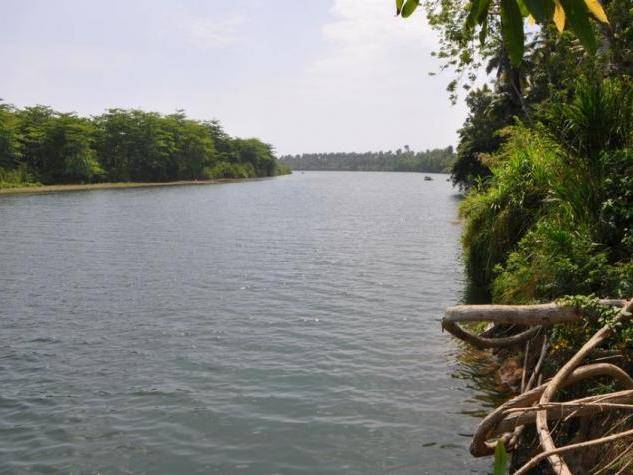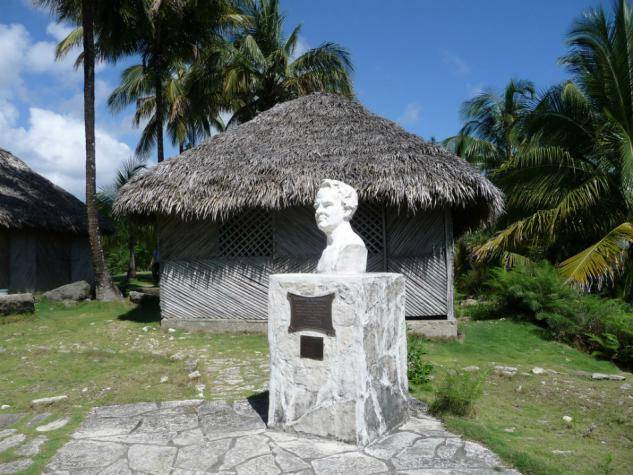
Fuerte de la Punta
Baracoa's third fortress, Fuerte de la Punta, was built in 1803 on a spit of land over the entrance to the bay. During the pseudorepublic it housed a radio telegraph office. The fortress now contains the Restaurante La Punta.
Severity: Notice
Message: Undefined property: stdClass::$geoplugin_countryName
Filename: views/service-template.php
Line Number: 42
Backtrace:
File: /var/www/vhosts/enjoycuba.travel/httpdocs/application/views/service-template.php
Line: 42
Function: _error_handler
File: /var/www/vhosts/enjoycuba.travel/httpdocs/application/controllers/Hospedaje.php
Line: 1067
Function: view
File: /var/www/vhosts/enjoycuba.travel/httpdocs/application/controllers/Hospedaje.php
Line: 64
Function: descripcion_hotel
File: /var/www/vhosts/enjoycuba.travel/httpdocs/index.php
Line: 315
Function: require_once
New account? Signup
The motel is located in a privileged location in front of the coast line of Baracoa Town. A historic place because in its facilities lived the famous “Rusa de Baracoa”.
Rooms: 12 Standard
Restaurants bars: 1 Restaurant (specialized in seafood) and 1 Snack-Bar.

Baracoa's third fortress, Fuerte de la Punta, was built in 1803 on a spit of land over the entrance to the bay. During the pseudorepublic it housed a radio telegraph office. The fortress now contains the Restaurante La Punta.

La Farola is a viaduct connecting the city of Baracoa, first village in Cuba, with the rest of the cities crossing from South to North of the mountain massif of Sagua-Baracoa. The viaduct is hosted in the air at 450 meters above the sea level and it has a length of 6 kilometers which go all over the La Farola Mountain. After 20 months of construction, it ended up being opened in 1965. The scenic road has 11 bridges suspended over the abyss and is listed as one of the seven wonders of Cuban architecture. For the difficulty of its construction and the important function it fulfills by connecting and integrating with the rest of the island the city of Baracoa. Because of this, it has been declared as one of the 7 wonders of the Cuban civil engineering.

The Río Toa, name which means ‘frog’ in indigenous language, is located 10 km Northwest from Baracoa. It is born in the Chuchillas Nipe-Sagua-Baracoa and it flows into the city of Baracoa. The Toa is characterized because it is the widest river in Cuba and where 71 tributaries flow into. With a length of 130 kilometers, it constitutes the habitat of a great number of plants and birds. The watershed of the Toa River occupies around 70% of the Reservation of the Biosphere that takes the name of "Cuchilla del Toa". The values of its biological diversity, the variety of its landscapes, the peculiarity of its ecosystems and the high presence of endemic species in flora and fauna, constitute the refuge and species center oldest of Cuba. Also standing out, it has its depth and its lushy woods which runs through, by what is known as "Cuba’s Amazon". Visitors of all the corners of the world are admitted fascinated by the natural beauties that it stores and the state of conservation of that jewel of the world geography. Enjoy an ecotourism day by one of the most significant spots of Cuba.

The Alejandro de Humboldt National Park is of the most important places for the preservation of the endemic flora of the region. The name of the park is an homage of the German Alejandro de Humboldt, an important scientist who went all over the island in the 19th century, achieving the title of Cuba’s Second Discoverer. It covers the provinces of Guantánamo and Holguín, in the northeastern region of the country with an extension of 10,680 hectares. This Park was declared World Heritage in 2001 and is one of the mountainous richest endemic ecosystems in the world. The landscapes of the area are typical and at the same time unique in the country, showing contrasts between the mountains of Sagua-Baracoa, with the vegetation of tropical humid forests. The park has camping places, accommodations, guided routes and high qualified staff to solve any doubt or problem of the visitors. 64 species of birds have been reported in its fauna, out of which 12 are endemic, which makes this area very appropriate for their observation. The region represents the last habitat of the Royal Woodpecker, and among mammals, one of the last ones for Almiques. Here we can also find one of the most beautiful species of snails in the world: The Polymita. Enjoy the forest, rivers, puddles and waterfalls in a rainy environment which create an incomparable landscape. A real treasure you cannot miss on your trip to the Eastern side of Cuba.
Skedio, S.L. CIF: B66173931. # Travel Agency Licence: GC-3667 © 2025 Enjoytravel Corporate, All rights reserved